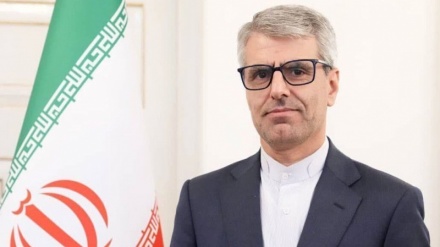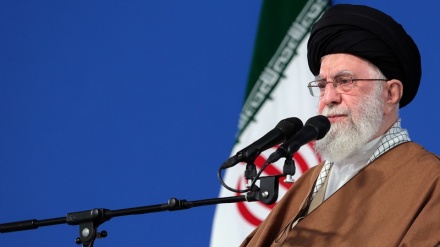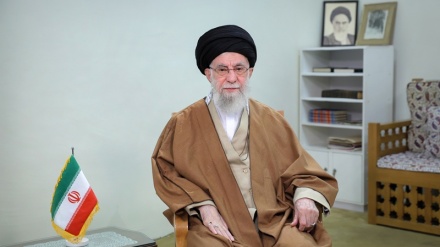Nowrouz (3)
Welcome to the 3rd episode of our programme, Nowrouz , which literally means “New Day”. Nowrouz is the Iranian New Year, which is celebrated each year on the first day of spring, in not only Iran, but wherever Persian culture was dominant, such as Afghanistan, Pakistan, Tajikistan, Uzbekistan, Turkmenistan, Kazakhstan, Kirghizstan, the Republic of Azerbaijan, Turkey, Iraq, and parts of Syria and India.
In this episode, we shall look at the geography of Nowrouz, and the fact that the United Nations and UNESCO have officially recognized and registered Nowrouz as a cultural event, and part of the cultural heritage of the world.
Nowrouz festivities have connections to spring and agriculture, but it can also be thought of as a celebration of kindness, goodness, pureness and honesty. Nowrouz, which has a history of at least 3000 years, is certainly not limited to the Iran of today; rather many countries and many lands – from parts of China in the East, all the way to the Mediterranean Sea in the West – celebrate Nowrouz in one form or another. Thus the geography of Nowrouz is spread over a vast land stretching from China in the East, to the Mediterranean Sea and the countries of the Balkans region in the West.
Nowrouz can be considered as “the festivity of lands which are part of the wider Iranian civilization and culture”. Although Nowrouz is quintessentially Iranian, it has mixed and intermingled with a variety of other cultures over thousands of years. Today, the ceremonies and rituals of Nowrouz are all significantly different, depending on which country you happen to visit in the vast region from China to the Balkans, but the Iranian origins of Nowrouz are still quite obvious and evident. Thus Nowrouz can be thought of as the common thread which ties together all countries within the sphere of Iranian civilization and culture.
The fact that Nowrouz is celebrated over a vast geographical area, the fact that it coincides with the first day of spring in the Northern hemisphere, (and the first day of autumn in the Southern hemisphere), and the fact that Nowrouz can be thought of “as a celebration of kindness and goodness”, have all combined to catch the attention of the United Nations. As a matter of fact, in 2009 on the 30th of the United Nations Educational, Scientific and Cultural Organization registered Nowrouz as a part of the World’s Cultural, Spiritual and Oral Heritage. Following this event, Iranian Diplomats at the United Nations and UNESCO, followed up on this issue with the aim of proposing a resolution for approval of the United Nations General Assembly in New York. Diplomats from other countries which recognize and celebrate Nowrouz, such as The Republic of Azerbaijan, Afghanistan, Tajikistan, Turkey, Turkmenistan, Kazakhstan, and Kirgizstan were also involved in the drafting of this proposed resolution at the UN General Assembly. Finally, these diplomatic efforts led by the Islamic Republic of Iran, bore fruit and on 23 February 2010, when the “World Nowrouz Day Resolution” (also known as “The Culture of Peace”) was approved and passed by the UN General Assembly. This resolution has a total of 22 paragraphs, and it can be thought of as the culmination of many months of hard diplomatic efforts.
The resolution designates 21st March as the International Day of Nowrouz, and it officially recognizes the Iranian origins of Nowrouz. Iran's then deputy ambassador to the UN, Ishaq Aal-e Habib, addressing the General Assembly had said that commemoration of Nowrouz is actually the manifestation of one of the UN high objectives for strengthening world peace by respecting national cultures and world cultural heritages. He added that Nowrouz with its Persian and Iranian roots quickly turned into the common culture of millions of human beings in Asia, Central Asia, the Middle East, Caucasus, the Balkans, and the Subcontinent with the advent of Islam. It is worth noting that the solar calendar year in use in Iran, like the lunar Islamic calendar, is also dated in accordance with the auspicious migration from Mecca to Medina of the Almighty's Last and Greatest Messenger, Prophet Mohammad (blessings of God upon him and his progeny). Hence the year to start on March 21 in Iran, Afghanistan, Tajikistan, the Azerbaijan Republic, and in other lands, is 1389 solar hijri.
The resolution on Nowrouz International Day spread over 17 paragraphs has 5 executive articles. Article 1 says the first day of Farvardin, corresponding to March 21, should be recognized as Nowrouz International day. Article 2 cites countries that commemorate Nowrouz as part of cultural heritage. Article 3 calls on other countries, especially Muslim ones, to consider Nowrouz. Article 4 stresses research on the history of Nowrouz and its traditions for the benefit of the international community. Article 5 invites all organs affiliated to the UN, particularly UNESCO, as well as other international and regional bodies, interested in taking part in Nowrouz customs.
Thus 21st March has been registered and listed on the United Nations Calendar as the International Day of Nowrouz. The resolution also praises the efforts of countries which want to preserve and expand the culture and traditions of Nowrouz. The resolution also urges other countries to familiarize themselves with the message and culture of Nowrouz – a message of peace, kindness, and friendship. The resolution also invites non-governmental organizations, various United Nations Funds and subsidiary organizations, particularly UNESCO, and various regional and international organizations which are not linked to the UN, and any country which has expressed an interest, to take part in an International Celebration of Nowrouz, under the auspices of the United Nations.
The fact that the world – the United Nations – has accepted Nowrouz as part of the world’s Heritage, shows the high status of Iran’s culture within the wider International community.
Today Nowrouz, this ancient Iranian festivity, has become “a connecting bridge” for tens of millions of people around the world. An estimated 300 million people around the world celebrate Nowrouz in one form or another.
In fact, by honouring Nowrouz, the United Nations has promoted one of its own long-cherished goals – to boost peace and friendship within the international community. Honouring Nowrouz also sits comfortably alongside another long-pursued United Nations goal – to promote cultural diversity around the world. Designating 21st March as the International Day of Nowrouz, means that the “Global Celebration of Nowrouz” also takes place on that date.


